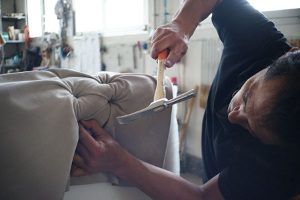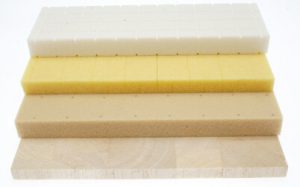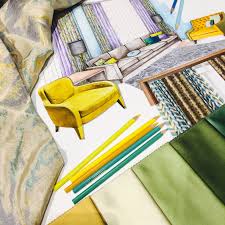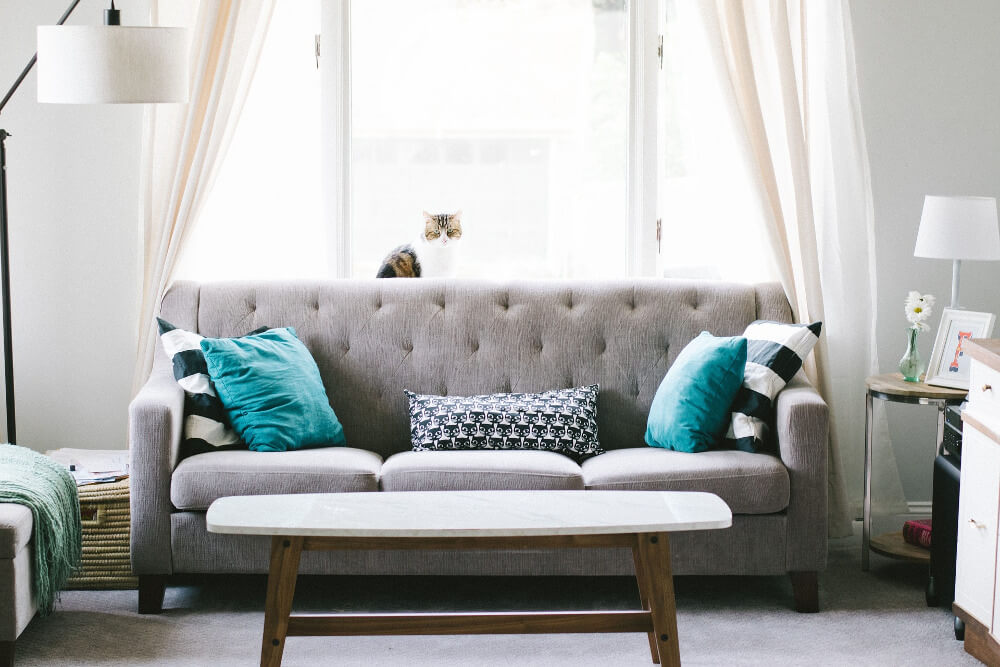Plus Size Today Lifestyle
Don’t settle for smaller uncomfortable seating solutions! You work hard and have a busy life. After a long day you deserve to come home to a relaxing and enjoyable environment. You deserve furniture that can support your build and lifestyle. Here at Plus Size Today lifestyle we look for furniture solutions that meet your needs!
My wife, like many other people, is a plus-sized person. We don’t fit into the “mass marketed” furniture available in many stores today. We need and want furniture to complement our life – furniture that is both stylish and functional. This means the furniture needs to accommodate a larger size frame, be comfortable and affordable and fit our budget.
While function is essential it is important the furniture also be stylish so that we can incorporate it into the living areas of our homes. Furniture makers are slowly catching up to the needs of the plus-size population and we are attempting to bring those function and style options to you.
Functional Plus Size Today Lifestyle Furniture Selection
At the outset we must define what is plus-sized. Standard sized furniture usually accommodates weights and sizes up to 300 pounds with people of smaller girths.
Plus-size furniture is usually designed for weights over 300 pounds and those with larger girths. When considering plus-size furniture there a 3 things to keep in mind to make sure your new furniture is functional for your space.
#1 – Framing and Construction
 Furniture made for “regular-sized” people usually uses light weight materials, such as lighter weight plywood, medium density fiberboard (MDF), wicker, vinyl and lightweight metals. This not only includes the frame of the product but the planks, coils, spindles and connectors (nails, screws, dovetails, glue, etc.) that constitute its total design.
Furniture made for “regular-sized” people usually uses light weight materials, such as lighter weight plywood, medium density fiberboard (MDF), wicker, vinyl and lightweight metals. This not only includes the frame of the product but the planks, coils, spindles and connectors (nails, screws, dovetails, glue, etc.) that constitute its total design.
These products may not be weight-rated for larger sized people meaning it may not be safe for plus-size people to safely use the product, either initially or for prolonged use. (See Business and Institutional Furniture Manufacturer’s Association (BIFMA), the non-profit organization for overseeing the commercial furniture industry, weight advisory to manufacturers about establishing weight limits on chairs.)
Furniture made for plus-sized people usually uses heavier weight materials such as thicker plywood, MDF, aluminum, steel and wood. This includes the frame, planks, coils, spindles and connectors that makeup the furniture. Thicker gauge steel, heavier duty screws and a strategic design will help make the product sturdier to accommodate heavy sizes. Always check the stated weight limits on furniture to make sure it will support your needs.
People are not only bigger in girth in these days but are also taller. This means you might need to consider not only the width of the seat but the depth too. The seating should meet you at the back of your knees to fully support your frame. A depth too short could cause posture issues or undue strain on your legs or knees. Seating is now available in depths greater than the standard 19 inches.
#2 – Cushioning: Density and Firmness
 Cushioning is just as important as the framing in your furniture for proper comfort and support. Cushioning is measured by density and firmness. Technically, the denser the cushion the firmer support you will have and the longer the cushion will last.
Cushioning is just as important as the framing in your furniture for proper comfort and support. Cushioning is measured by density and firmness. Technically, the denser the cushion the firmer support you will have and the longer the cushion will last.
Density is found by weighing a 12″ x 12″ x 12″ block of the material and determining its weight. Many foam weights normally fall between one and three pounds. However, the densest foams can range up to 15 pounds. (1)
Firmness refers to the feel of the foam and how it responds to weight and pressure. The industry measurement is called Indentation Load Deflection (ILD) and is determined by mechanical performance testing. Testers take a foam piece measuring 15″ x 15″ x 4″, apply a force in pounds to make a 50 square inch circular indent to compress the foam one inch (or 25 percent of its original thickness). If it requires 36 pounds of pressure to indent to one inch then the foam has an ILD of 36. Most common foams have a rating from 8 to 70 with some materials being as high as 120 to 150. (1)
Make sure your cushioning is appropriate for your intended weight and use. Avoid cushions that allow you to unzip a section and stuff more fill in it to regain its plumpness, such as a fiber fill! These will not give you the proper support your frame needs.
#3 – Furniture Covering
There is a wide array of coverings for your furniture. You need to choose the appropriate fabric for the intended use of your piece of furniture. For instance, you may want a more dense and durable fabric on high use or moving furniture (such as recliners) to avoid ripping and tearing. You will also want to consider the ease of cleaning and soil resistance when considering a fabric choice.
Here is a list from Better Homes and Gardens on fabric types and their recommended uses:
Natural Fabrics
 Linen: Linen is best suited for formal living rooms or adult areas because it soils and wrinkles easily. And, it won’t withstand heavy wear. However, linen does resist pilling and fading. Soiled linen upholstery must be professionally cleaned to avoid shrinkage.
Linen: Linen is best suited for formal living rooms or adult areas because it soils and wrinkles easily. And, it won’t withstand heavy wear. However, linen does resist pilling and fading. Soiled linen upholstery must be professionally cleaned to avoid shrinkage.
Leather: This tough material can be gently vacuumed, damp-wiped as needed, and cleaned with leather conditioner or saddle soap.
Cotton: This natural fiber provides good resistance to wear, fading, and pilling. It is less resistant to soil, wrinkling, and fire. Surface treatments and blending with other fibers often atone for these weaknesses. Durability and use depend on the weave and finish. Damask weaves are formal; canvas (duck and sailcloth) is more casual and more durable.
Wool: Sturdy and durable, wool and wool blends offer good resistance to pilling, fading, wrinkling, and soil. Generally, wool is blended with a synthetic fiber to make it easier to clean and to reduce the possibility of felting the fibers (causing them to bond together until they resemble felt). Blends can be spot-cleaned when necessary.
Cotton Blend: Depending on the weave, cotton blends can be sturdy, family-friendly fabrics. A stain-resistant finish should be applied for everyday use.
Vinyl: Easy-care and less expensive than leather, vinyls are ideal for busy family living and dining rooms. Durability depends on quality.
Silk: This delicate fabric is only suitable for adult areas, such as formal living rooms. It must be professionally cleaned if soiled.
Synthetic Fabrics
Acetate: Developed as imitation silk, acetate can withstand mildew, pilling, and shrinking. However, it offers only fair resistance to soil and tends to wear, wrinkle, and fade in the sun. It’s not a good choice for furniture that will get tough everyday use.
Acrylic: This synthetic fiber was developed as imitation wool. It resists wear, wrinkling, soiling, and fading. Low-quality acrylic may pill excessively in areas that receive high degrees of abrasion. High-quality acrylics are manufactured to pill significantly less.
Nylon: Rarely used alone, nylon is usually blended with other fibers to make it one of the strongest upholstery fabrics. Nylon is very resilient; in a blend, it helps eliminate the crushing of napped fabrics such as velvet. It doesn’t readily soil or wrinkle, but it does tend to fade and pill.
Olefin: This is a good choice for furniture that will receive heavy wear. It has no pronounced weaknesses.
Polyester: Rarely used alone in upholstery, polyester is blended with other fibers to add wrinkle resistance, eliminate crushing of napped fabrics, and reduce fading. When blended with wool, polyester aggravates pilling problems.
Rayon: Developed as an imitation silk, linen, and cotton, rayon is durable. However, it wrinkles. Recent developments have made high-quality rayon very practical. (2)
References:
(1) The Foam Factory – https://www.thefoamfactory.com/blog/index.php/the-differences-and-relationship-between-foams-density-weight-and-firmness
(2) Better Homes and Gardens – http://www.bhg.com/decorating/lessons/basics/guide-to-upholstery-fabrics/#page=1

